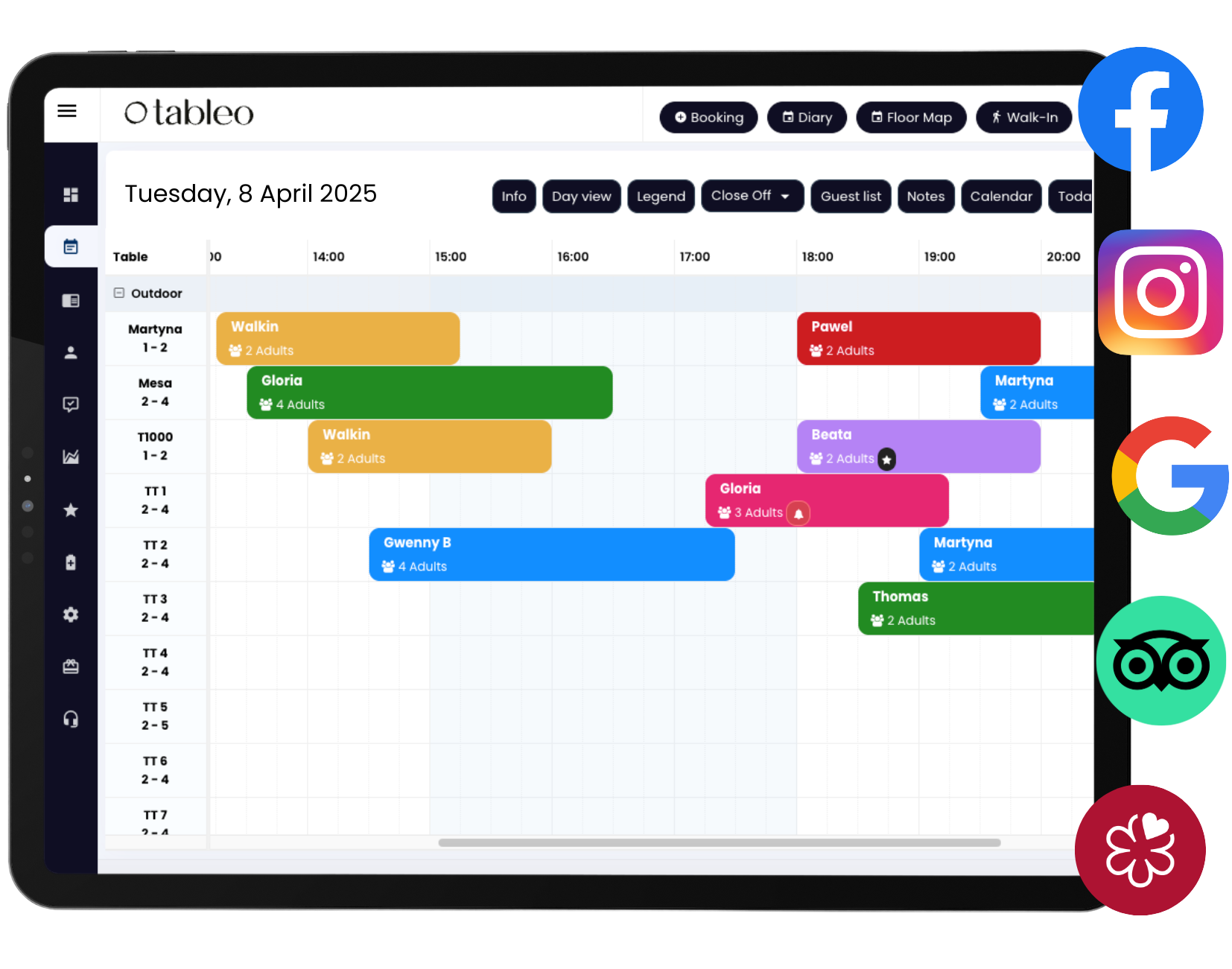Food plating in restaurants has become much more than a way to serve a meal. The look of a dish is now just as important as its taste, with chefs harnessing design to create a full sensory experience. Here is something you might not expect. Restaurants using advanced plating techniques report a 30 percent increase in positive diner reviews compared to standard presentation. Chefs are no longer just arranging food for looks. They are telling visual stories, using colour and structure to spark emotion and curiosity with every plate.
Table of contents
Quick summary
| Takeaway | Explanation |
| Mastering Visual Composition | Understanding visual composition, including layering, height, and colour combinations, is crucial for creating engaging and memorable plating that draws the diner’s eye. |
| Innovative Plating Techniques | Techniques like landscape and narrative plating, interactive presentations, and using unconventional surfaces allow chefs to transform dishes into immersive experiences that communicate culinary stories. |
| Essential Tools and Equipment | Utilizing precision tools such as plating tweezers, quenelle spoons, and specialised plating equipment enhances the ability to create artful presentations that reflect the chef’s creativity. |
| Standardised Plating Frameworks | Implementing clear, replicable plating guidelines across the team ensures consistency in food presentation, allowing even less experienced staff to produce visually appealing plates. |
| Continuous Team Training | Regular training and the use of technology to reinforce plating techniques support the development of a cohesive visual language and foster a creative team environment. |
Mastering the basics of food plating techniques
Chefs recognize that food presentation transforms dining from a mere act of consumption into an extraordinary sensory experience. In 2025, food plating techniques have evolved far beyond simple arrangements, becoming a sophisticated art form that communicates culinary narrative and creativity.
Understanding visual composition
Food plating begins with understanding visual composition principles. Professional chefs approach plate design like artists crafting a canvas. According to culinary experts, successful plating involves creating deliberate layers, balanced heights, and strategic color combinations that draw the diner’s eye across the plate.
Height provides dramatic visual interest. Chefs achieve this by stacking ingredients, using tower-like structures, or creating elevated platforms with purees or crisp elements. The goal is not just vertical drama but also textural contrast that makes each bite intriguing. A delicate protein might rest atop a smooth vegetable puree, crowned with a crisp garnish that adds both architectural elegance and textural complexity.
Color and negative space
Color plays a crucial role in food plating techniques. Chefs carefully select ingredients that create vibrant, complementary color palettes. A bright green herb sauce might accent a golden-seared piece of fish, while roasted vegetables in autumnal oranges and browns create warmth on the plate. Professional culinary training emphasizes that color is not just aesthetic but communicates freshness, seasonality, and ingredient quality.
Equally important is negative space. Chefs intentionally leave white or neutral areas on the plate, allowing individual components to breathe and preventing visual clutter. This minimalist approach draws attention to the dish’s key elements, making each ingredient more impactful. Think of the plate as a canvas where strategic emptiness is as important as the painted details.
Precision tools and techniques
Modern food plating requires precision tools that transform culinary vision into reality. Chefs now use specialized equipment like fine-tipped tweezers for exact garnish placement, squeeze bottles for creating elegant sauce designs, and ring molds for perfectly shaped components. These tools enable intricate presentations that were once impossible.
Tweezers allow centimetre-perfect positioning of microgreens, edible flowers, or delicate garnishes. Squeeze bottles help create elegant sauce designs – from precise dots to sweeping artistic strokes. Ring molds ensure geometrically perfect stacks of ingredients, transforming a simple dish into a structured culinary artwork.
For restaurants wanting to elevate their plating game, read our comprehensive guide on food presentation techniques, which offers detailed insights into professional plating strategies. Remember, exceptional food plating is about storytelling – each plate should communicate the chef’s creativity, respect for ingredients, and culinary philosophy.
By mastering these fundamental food plating techniques, restaurants can transform dining from a routine meal into an immersive, memorable experience that engages all senses.
Creative plating ideas for restaurant menus
Creative food plating has transformed from a culinary technique into a powerful storytelling medium for restaurants. In 2025, chefs are pushing boundaries by turning each plate into an immersive experience that engages diners far beyond traditional presentation methods.
Landscape and narrative plating
The “Landscape Technique” emerges as a groundbreaking approach to plating. According to culinary design experts, this method arranges food in low, linear forms reminiscent of natural landscapes. Imagine a dish where roasted vegetables cascade like rolling hills, with protein elements positioned to represent architectural structures, creating a miniature edible terrain.
This technique goes beyond visual appeal. Each placement tells a story about ingredient origin, seasonal changes, or cultural heritage. A seafood dish might mimic a coastal scene, with seaweed puree representing ocean waves and carefully placed shellfish creating a maritime narrative. Chefs are using plating as a form of culinary storytelling, transforming meals into immersive experiences that spark conversation and emotional connection.
Interactive and surprise presentation
The “Hide and Seek Technique” introduces playfulness and surprise into dining. As innovative culinary professionals demonstrate, this approach involves concealing elements of the dish, creating an interactive experience. A tartare might be delicately hidden beneath translucent vegetable sheets, or a protein could be partially obscured by crisp, architectural garnishes that diners must navigate.
This method transforms eating from a passive to an active experience. Diners become participants, uncovering layers of flavor and texture. It challenges traditional dining expectations and creates memorable moments that extend beyond taste, engaging multiple senses and encouraging culinary exploration.
Unconventional surfaces and materials
In 2025, the plate itself becomes a canvas for creativity. Chefs are moving beyond traditional ceramic surfaces, incorporating organic materials like slate, wood, and volcanic stone. These unconventional surfaces add texture, temperature contrast, and narrative depth to the dining experience.
A dessert might arrive on a piece of local slate, reflecting the restaurant’s commitment to regional ingredients. A charcuterie board could be served on a hand-carved wooden plank, telling a story of craftsmanship and connection to local woodworking traditions. Our guide on menu design suggests that these creative presentations can significantly enhance a restaurant’s brand identity and customer engagement.
These innovative plating techniques represent more than aesthetic choices. They are a form of culinary communication, transforming each dish into a multisensory narrative that reflects the chef’s creativity, respect for ingredients, and understanding of dining as an art form. By embracing these approaches, restaurants can create unforgettable experiences that extend far beyond traditional meal service.
Choosing the right tools and plates
Professional food plating requires a strategic selection of tools and plates that transform culinary vision into a remarkable dining experience. In 2025, chefs recognize that choosing the right equipment is as crucial as the ingredients themselves.
Essential precision tools
Precision tools have become the cornerstone of modern food plating. Culinary professionals recommend a comprehensive toolkit that goes beyond traditional cooking utensils. Plating tweezers represent the most critical tool in this arsenal. Available in straight, offset, and fine-tip varieties, they enable chefs to place microgreens, edible flowers, and delicate garnishes with millimetre-perfect accuracy.
The quenelle spoon emerges as another indispensable tool. Chefs use this specialized utensil to create smooth, elegant shapes for mousses, ice creams, and purées. Its curved design allows for consistent, visually appealing forms that elevate the presentation of both savory and sweet dishes. These tools are not mere accessories but extensions of the chef’s artistic expression.
Selecting the perfect plate
Plate selection goes far beyond aesthetic considerations. The plate becomes a canvas that frames and enhances the culinary creation. White plates remain a classic choice, providing a neutral background that allows food colors and textures to pop. However, 2025 sees an expansion of plate materials and designs that tell a deeper story.
Chefs are exploring unconventional surfaces that complement specific cuisines or dish concepts. Slate plates might accompany rustic, earthy dishes, while hand-crafted ceramic plates can reflect a restaurant’s commitment to local artisanship. The size and shape of the plate are equally critical. Larger plates with strategic empty spaces allow individual components to breathe, while uniquely shaped plates can guide the diner’s eating experience. Our guide on restaurant presentation offers deeper insights into selecting the perfect serving platform.
Specialized plating equipment
Beyond basic tools, specialized equipment has become essential for creative plating. Squeeze bottles allow precise sauce application, transforming liquid elements into artistic designs. Ring molds create perfect geometric shapes, enabling chefs to stack and layer ingredients with architectural precision. Silicone mats and specialized spatulas help in creating intricate garnishes and delicate decorative elements.
Technology has also entered the plating realm. Some high-end restaurants now use temperature-controlled plates that maintain optimal food temperature while providing a pristine presentation surface. Magnetic plating tools enable even more complex structural presentations, allowing chefs to create gravity-defying arrangements that were impossible just a few years ago.
Choosing the right tools and plates is a nuanced art that requires understanding of culinary techniques, artistic vision, and technical precision. Each tool and plate becomes an extension of the chef’s creativity, transforming food from a mere meal into a multisensory experience that engages diners on every level. As restaurant presentation continues to evolve, the careful selection of plating tools will remain a critical element of culinary excellence.
Team training: Consistency in food presentation
Consistent food presentation is the hallmark of exceptional restaurants. In 2025, successful kitchens understand that creating visually stunning dishes requires more than individual talent—it demands systematic team training and a shared understanding of plating philosophy.
Establishing standardized plating frameworks
Hospitality experts emphasize the critical importance of developing clear, replicable plating guidelines. The “clock-style” method emerges as a fundamental technique for ensuring uniformity. In this approach, specific plate regions are designated for different components: proteins positioned at the 6 oclock position, starches at 10 oclock, and vegetables at 2 oclock. This systematic approach enables every team member to create visually consistent plates, regardless of individual skill levels.
Training begins with comprehensive visual references. Restaurants create detailed plating guides that include photographs, diagrams, and step-by-step instructions for each signature dish. These references serve as a critical training tool, allowing new staff to quickly understand and replicate the restaurant’s precise presentation standards. For more insights on staff performance improvement, restaurants can develop structured training programmes that emphasize both technical skills and artistic vision.
Creating a consistent visual language
Consistency extends beyond mere placement—it encompasses color balance, height variation, and negative space management. According to culinary training professionals, successful team training involves teaching staff to think like visual artists. Chefs must educate their teams about fundamental design principles: creating focal points, understanding color theory, and maintaining proportion.
Workshops that include hands-on practice, visual analysis, and collaborative critique help build a shared aesthetic understanding. Team members learn to evaluate plates not just for taste, but for visual impact. This approach transforms plating from an individual skill to a collective art form, where each team member contributes to a unified visual narrative.
Technology and continuous learning
Modern restaurants leverage technology to support consistent presentation. Digital platforms now allow chefs to record precise plating techniques, create interactive training modules, and provide real-time feedback. Video demonstrations, augmented reality training tools, and digital plating guides enable staff to learn and refine their techniques continuously.
Regular team training sessions become crucial. These are not just technical workshops but opportunities for creative exchange. Chefs might challenge team members to plate the same dish in multiple ways, encouraging innovation while maintaining core presentation principles. Periodic competitions and collaborative design sessions keep the team engaged and continuously evolving their collective plating skills.
Consistent food presentation is a complex dance of technique, creativity, and teamwork. By investing in comprehensive training, creating clear guidelines, and fostering a culture of continuous learning, restaurants can transform their plates from mere meals to memorable culinary experiences. The goal is not uniformity, but a harmonious expression of the restaurant’s unique culinary identity—where every plate tells a consistent, compelling story.
Elevate your food presentation and service experience
You have mastered the art of food plating techniques and brought creativity to every dish. Yet, even the most beautifully presented plates can be overshadowed if diners experience booking frustration or face long waits. The true impact of a memorable dining experience comes from a seamless fusion of hospitality, flawless presentation, and operational excellence. Imagine your signature dishes consistently reaching delighted guests who arrive relaxed and on time.
Unlock a new standard for guest experience by pairing advanced food presentation with effortless table management. Discover how Tableo turns every beautifully plated meal into a truly unforgettable moment — for both your team and your guests. Take control of bookings, streamline guest flow, and let your plating shine with every reservation. Start today and see why hundreds of innovative restaurants trust Tableo’s reservation management solutions to keep their creativity front and centre.
Frequently Asked Questions
Successful food plating techniques involve understanding visual composition, including layering, height, and colour combinations. Chefs use these principles to create engaging presentations that guide the diner’s eye across the plate.
Creative plating transforms a meal into an immersive experience by using narrative techniques, interactive presentations, and unconventional surfaces, which engage diners on multiple sensory levels and make the dining experience memorable.
Essential tools for food plating include plating tweezers for precise garnish placement, quenelle spoons for shaping, and squeeze bottles for sauce application. These tools help chefs create intricate and visually appealing presentations.
Restaurants can ensure consistency in food presentation by establishing standardized plating frameworks, providing comprehensive training for staff, and utilising visual references such as guides and diagrams to maintain a uniform aesthetic across dishes.

Stephanie Bugeja
Tableo’s design-savvy Marketing Executive, Stephanie blends UX expertise with creative flair. Lover of clean layouts and cornetti in Rome.

Stephanie Bugeja
Tableo’s design-savvy Marketing Executive, Stephanie blends UX expertise with creative flair. Lover of clean layouts and cornetti in Rome.













